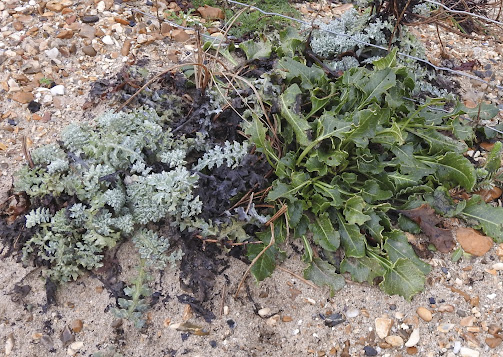We parked in sunshine overlooking
Wilverley Plain, and Pied Wagtail, Redwing, Mistle Thrush, Starling and Magpie were
seen on the lawn before we entered the enclosure at the north-western end of the car park by
the “Wilverley Wander” signpost.
 |
| Pied Wagtail - female © Chris Robinson |
Proceeding ahead on the main path,
we soon diverted right to examine fungi: Yellow Stagshorn, Hairy Curtain Crust andMyceana sp. were seen on fallen branches,
Birch Polypore on a nearby tree and Small Stagshorn and Purple Jellydisc on a rotting
stump. A Larch tree was distorted by a huge ball of vegetation high in the canopy,
thought to be caused by a fungal infection. A log to the left of the main track
nurtured further fungi including: Candlesnuff Fungus, Turkeytail and King Alfred’s
Cakes.
 |
Distorted Larch © Julia Race
|
We turned right by a green metal
enclosure sign, then almost immediately left on a path heading into the woods past
carpets of moss and Porcelain Fungi. Fallen twigs were rich in well-developed lichen
including Usnea sp., Parmotrema sp. and
Cladonia sp. Mycelium of a white rot fungus
was examined on a fallen tree, while Song Thrush and Wren were seen in the trees.
Ferns seen included Male and
Hard Ferns, then we studied Wood Sorrel and more Yellow Staghorn, before bearing
left for a short distance on the main track, then taking the next right turn to
leave the enclosure through a gate into the sunshine. Walking ahead, then bearing
right onto a path we passed Cross-leaved Heath in flower before walking under the
Burley Road bridge.
 |
| Male Fern © Julia Race |
Wellingtons were advised for this
section down to the Avon Water, as a stream was overflowing across the firm gravel
path. Walking past a reed bed, Bog Myrtle, Water Mint, Marsh St. John’s Wort and
Bog Bean were growing. We paused by the Avon Water to enjoy the peaceful, sunny
scene, before retracing our steps back to the enclosure, stopping for refreshments
in the sun on the way. A Coral Brittlegill was seen on the lawn just outside
the enclosure.
 |
| Avon Water - ford © Julia Race | | | |
 |
| The refreshment stop just outside Wilverley © Julia Race |
Re-tracing
our steps through the gate, up the gravel track, and turning right at the first
junction, we climbed steadily on a wide sunny gravel track, with Blackberries in
fruit, where a Red Admiral, a Green Woodpecker and a Wren were seen. The route
was lined with ferns including Hard Shield Fern. Hairy Curtain Crust and Honey Fungus
clumps were seen on fallen trees.
 |
| The Sickener Russula emetica © Julia Race |
We turned left on the gravel track,
observing resin seeping from the bark of several trees, leaving white stains down
the trunks. A Splitgill was studied on a fallen tree. At the green metal enclosure
sign, we turned right to re-trace our steps back to the car park past figwort plants:
On route we studied a large group of Common Inkcaps at different stages of growth and decay.
Goldcrest, Blue and Coal Tits and Robin were spotted and a Nuthatch heard. J & A
 | |
| Common Inkcap © Chris Robinson |
 |
Our route
|
© Crown copyright 2022 Ordnance Survey. Media 005/22.
The licence is valid until 31 December 2022

































